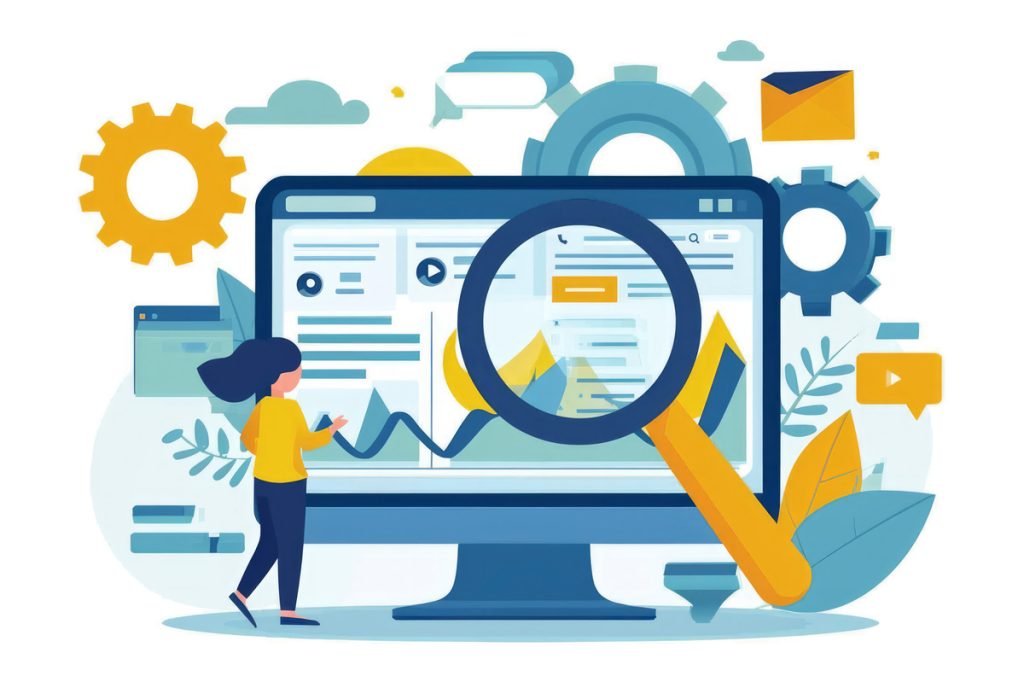ADA Website Compliance: 5 Strategic Benefits for B2B Companies

In today’s digital landscape, website accessibility isn’t just a legal consideration—it’s a strategic business imperative. With over 61 million Americans living with disabilities and increasing legal scrutiny of digital platforms, ADA compliance has become crucial for B2B companies looking to expand their market reach while minimizing risk.
The Americans with Disabilities Act (ADA) now extends well beyond physical accommodations, encompassing digital spaces where modern business happens. For B2B companies, ensuring website accessibility isn’t just about compliance – it’s about capturing opportunities and protecting your digital assets.
Learn More: Understanding ADA Compliance
1Expanded Market Reach and Business Opportunity
Making your website ADA compliant opens doors to a significant market segment often overlooked in B2B planning. With the disability community wielding over $490 billion in disposable income, accessibility directly impacts your bottom line. Moreover, many enterprise and government contracts now require vendors to maintain accessible digital properties.
Consider this: Decision-makers at potential client companies may themselves need accessibility accommodations, or they may be required to partner only with ADA-compliant vendors. By ensuring accessibility, you’re not just reaching more users—you’re qualifying for more business opportunities.
Key Business Impacts:
- Access to government contracts requiring accessibility compliance
- Qualification for enterprise vendor programs
- Expanded reach to decision-makers with disabilities
- Enhanced mobile and alternative device accessibility
Learn More: What Are the Consequences of Not Being ADA Compliant?
2Enhanced Search Engine Performance
Modern search engines reward accessible websites, making ADA compliance a powerful SEO ally. Google’s algorithms increasingly consider user experience signals that directly align with accessibility best practices. By implementing proper heading structures, descriptive alt text, and semantic HTML, you’re simultaneously improving accessibility and search engine visibility.
Technical Benefits That Impact SEO:
- Improved content structure through proper heading hierarchy
- Enhanced crawlability through semantic HTML
- Better user engagement metrics
- Reduced bounce rates due to improved usability
Recent studies show that websites meeting WCAG 2.1 guidelines typically score 15-20% better in core web vitals, directly impacting search rankings and user experience metrics.
Learn More: How Can SEO and ADA Compliance Work Together?
3Risk Mitigation and Legal Protection
The landscape of digital accessibility litigation continues to evolve, with over 3,200 federal lawsuit filings in 2023 related to website accessibility (UsableNet, 2024). B2B companies are increasingly finding that an investment in accessibility costs far less than defending against a single ADA lawsuit.
Current Legal Considerations:
- Average settlement costs exceeding $35,000
- Potential brand damage from accessibility lawsuits
- Increased regulatory scrutiny of B2B digital properties
- Growing requirements for vendor compliance
Learn More: Understanding The Different Levels of ADA Compliance
4Improved User Experience for All Users
Accessibility improvements inherently enhance usability for everyone, not just users with disabilities. Clear navigation, proper contrast ratios, and structured content benefit all users, particularly in complex B2B environments where clear information presentation is crucial.
Universal Benefits:
- Improved mobile responsiveness
- Faster page load times
- Clearer navigation structures
- Better content organization
- Enhanced form usability
Our analysis shows that B2B sites implementing best WCAG 2.1 guidelines see improvement in overall conversion rates.
5Brand Reputation and Social Responsibility
In the B2B space, your commitment to accessibility demonstrates corporate social responsibility and attention to detail. This can significantly impact brand perception among potential clients, partners, and employees.
Strategic Advantages:
- Enhanced ESG (Environmental, Social, and Governance) profile
- Competitive differentiation in RFP responses
- Improved employer branding
- Strengthened client trust
Taking Action: Implementation Strategy
Start by assessing your current compliance level and developing a prioritized roadmap for improvements. Focus initial efforts on:
- Navigation and structure
- Form accessibility
- Content readability
- Multimedia accessibility
- Mobile responsiveness
For most B2B websites, achieving WCAG 2.1 Level AA compliance provides the optimal balance of accessibility and implementation effort.
Contact our team for a comprehensive accessibility audit of your website. We’ll help you understand your current compliance level and develop a strategic plan for improvement that aligns with your business objectives.
About the Author

Kevin Bossons
Senior Digital Strategist
With over 15 years of experience in digital marketing and search engine optimization, Kevin has grown from an SEO contractor to Senior Digital Strategist at WT Digital Agency.